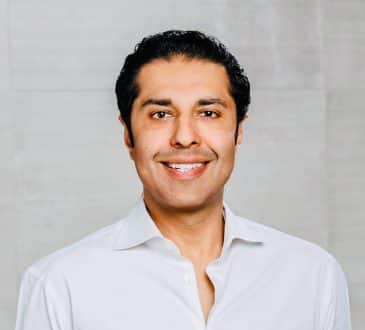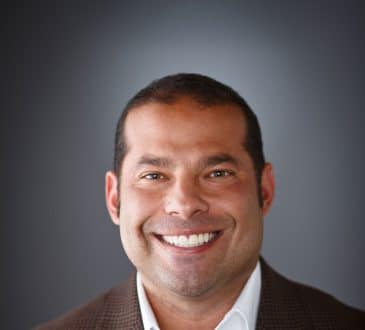Unveiling the Future of Inclusion for HR Leaders

Imagine a world where inclusivity isn’t just an HR buzzword, but the heartbeat of corporate success. This isn’t a utopian fantasy—it’s the vision sculpted by Parul Kapoor, Senior Vice President, Talent and Culture, at Calix, according to her interview with me. In an industry where the race for innovation is relentless, Parul champions inclusivity not just as a moral compass but as the cornerstone of corporate triumph.
The Essence of Inclusive Leadership
Inclusive leadership is a dynamic and evolving practice vital for the modern workplace. At its core, inclusive leadership is about creating a work environment where diversity is celebrated and leveraged for organizational growth.
For Parul Kapoor, inclusivity is a strategic pillar that underpins workforce policies. This strategy has positioned the company as a desirable destination for diverse talent, creating an environment where individual strengths and needs are acknowledged and integral to the organizational dynamic.
A striking example of Calix’s commitment to inclusive communication is the “Don’t let me be wrong” initiative. This program, championed by Parul, encourages employees at every level to confidently share their perspectives, effectively dismantling hierarchical barriers and fostering a culture where all voices are equally valued. This initiative does more than promote openness; it drives innovation by integrating a diverse array of insights into the decision-making process.
Agility and adaptability are key in the context of remote work. Under Parul’s guidance, Calix maintains a continuous cycle of evaluation and adaptation, informed by feedback from across the organization and aligned with industry best practices. This has enabled the company to maintain its relevance and effectiveness in a constantly evolving market.
Parul’s commitment to diversity extends beyond organizational boundaries. Her global staffing strategy, attuned to the unique challenges and opportunities of different markets, from North America to APAC and EMEA, is a testament to her inclusive approach. This strategy not only enhances the global presence of Calix but also ensures that the team is reflective of and responsive to the diverse world it serves.
Moreover, in the complex field of global mergers, Parul’s strategy stands out for its cultural sensitivity and strategic foresight. By placing cultural due diligence on an equal footing with financial analysis, she ensures that mergers are not only economically viable but also culturally coherent. This approach leads to smoother transitions, sparks creativity, and contributes to the development of a robust, adaptable corporate culture. Parul’s leadership thus highlights a key insight for modern businesses: embracing diversity is not merely a moral choice but a strategic necessity, one that can unlock unexpected benefits and drive innovative growth.
Parul is deeply committed to diversity, going beyond mere words to embed it into her company’s core values. She sees inclusivity as a way to bring together varied viewpoints, each adding its unique strength to the decision-making process. This isn’t just a lofty goal; it has real effects. By embracing different perspectives, Parul’s approach sparks innovation, enhances flexibility, and is essential for success in the complex global marketplace. Her belief in inclusivity is a powerful message to other leaders.
Innovation and Technology for Inclusive Outcomes
A particularly striking aspect of Parul’s strategy is the establishment of “Inclusivity Labs.” These are collaborative think-tank sessions where employees from various levels and departments come together to address inclusivity challenges and opportunities. These labs have become a hotbed for innovative ideas, transforming the concept of inclusivity from a top-down mandate to a collaborative, company-wide endeavor. They underscore a fundamental truth: in the diverse tapestry of a global company, every thread – every voice – is crucial.
Parul also recognizes the power of technology in advancing her inclusive agenda. Under her guidance, HR technology has become a cornerstone in promoting diversity and inclusivity within the organization. She has pioneered the use of technology-enabled programs to foster skill and ability growth, breaking free from the traditional constraints of age, background, and experience. Moreover, her team utilizes advanced people analytics to identify and address unconscious biases in recruitment and management practices. These technological initiatives provide an objective framework through which the company continuously refines its approach, ensuring a workplace that is not only inclusive but also conducive to business growth and innovation.
Measuring the Impact and Addressing Challenges
Parul firmly believes that the success of diversity and inclusivity initiatives should be quantifiable. She has instituted clear metrics and regular audits to assess the company’s progress in these areas. This data-driven approach has revealed a positive correlation between a diverse leadership team and key business performance indicators, such as market share and profitability. These findings are a powerful testament to the tangible benefits of inclusivity, offering compelling evidence that diversity is not just a moral imperative but a key driver of business success.
The journey towards a truly inclusive workplace is not without its challenges, and Parul is forthright about the obstacles she faces. Resistance to change is a common issue in any organization, but Parul tackles it with persistent communication and by showcasing the clear business benefits of a diverse workforce. Her transparency in discussing these challenges offers a realistic and valuable perspective for leaders looking to embark on a similar path.
Parul’s vision and strategies offer a blueprint for others in the telecom industry and beyond. She emphasizes that building an inclusive culture requires not just a one-time initiative but a sustained, company-wide commitment. Her advice to others in leadership positions is clear: start with a firm vision of inclusivity, backed by unwavering support from the top. This commitment must then be translated into continuous, tangible actions that permeate every level of the organization.
The Essence of Inclusive Leadership and Cognitive Biases
In the realm of corporate leadership, particularly in the context of inclusivity, cognitive biases play a pivotal role, often operating subconsciously to influence our decision-making. In my conversation with Parul, it became clear how certain cognitive biases, specifically confirmation bias and empathy gap, impact the pursuit of inclusivity in corporate settings.
Confirmation bias, the tendency to seek, interpret, and remember information that confirms our preconceptions, is a significant hurdle in achieving genuine diversity and inclusivity. This bias often manifests in leadership decisions, where executives may unconsciously favor strategies, ideas, or candidates that align with their existing beliefs or experiences. This bias can create a homogenous leadership, where diverse perspectives are inadvertently filtered out, not due to overt resistance to diversity, but because of the subtle influence of confirmation bias in decision-making.
For instance, when expanding leadership teams or staffing for global roles, confirmation bias might lead to overlooking candidates who bring diverse perspectives, simply because they do not fit the conventional mold or echo the existing leadership’s viewpoints. This bias can inadvertently maintain the status quo, hindering the integration of truly diverse perspectives that are essential for navigating complex global markets.
The empathy gap, another critical cognitive bias, refers to the difficulty of understanding others’ feelings, especially when they are in a different emotional or physical state than we are. In the context of inclusivity, the empathy gap can lead to misunderstandings or underestimation of the challenges faced by diverse groups within an organization. It’s key to acknowledge and actively bridge this gap to create an inclusive environment.
For example, leaders might underestimate the challenges faced by employees from different cultural backgrounds or with different life experiences. This underestimation can lead to policies or corporate cultures that, while well-intentioned, fail to address the unique needs or concerns of various groups within the organization. To overcome the empathy gap involves encouraging open dialogues, fostering environments where diverse employees feel comfortable sharing their experiences, and actively seeking to understand and address these unique perspectives.
Recognizing and mitigating the effects of these cognitive biases is crucial for leaders who aspire to create genuinely inclusive workplaces. Strategies include conducting training sessions to raise awareness of these biases, implementing decision-making processes that involve diverse viewpoints to counteract confirmation bias, and creating forums where empathy can be cultivated through shared experiences and open conversations.
Moreover, we need to use advanced HR analytics as a tool to objectively assess and address these biases. By tracking recruitment patterns, promotion rates, and employee feedback, these analytics help identify areas where biases may be influencing decisions unconsciously. This data-driven approach allows the organization to make targeted changes, fostering a more inclusive and diverse workplace.
The Future of Inclusive Strategy
Looking to the future, Parul envisions a corporate world where inclusivity is seamlessly integrated into every facet of business operations. Her goal is a future where diversity and inclusion are not peripheral concerns relegated to HR but are central to every business strategy, team discussion, and product development. This forward-looking vision promises a corporate landscape where inclusivity is the norm, not the exception.
In my conversation with Parul, it became abundantly clear that her approach to inclusivity is more than just a set of policies or initiatives. It’s a comprehensive, strategic approach that is reshaping the landscape of corporate leadership. Her insights and strategies offer a roadmap for any leader committed to creating a more inclusive, successful, and vibrant corporate world. Parul Kapoor is not just navigating her company through the challenges of the global telecom industry; she is setting a new standard, demonstrating that inclusivity is not just beneficial for the workforce—it’s essential for business excellence.
Have you read?
The world’s largest economies in 2023.
Ranked: Safest Countries in the World, 2023.
Countries With the Most Female Billionaires, 2023.
Economy Rankings: Largest countries by GDP, 2023.
The Global Passport Index: The World’s Most Powerful Passports.
Richest countries in the world by GDP per capita in 2023.
Add CEOWORLD magazine to your Google News feed.
Follow CEOWORLD magazine headlines on: Google News, LinkedIn, Twitter, and Facebook.
This report/news/ranking/statistics has been prepared only for general guidance on matters of interest and does not constitute professional advice. You should not act upon the information contained in this publication without obtaining specific professional advice. No representation or warranty (express or implied) is given as to the accuracy or completeness of the information contained in this publication, and, to the extent permitted by law, CEOWORLD magazine does not accept or assume any liability, responsibility or duty of care for any consequences of you or anyone else acting, or refraining to act, in reliance on the information contained in this publication or for any decision based on it.
Copyright 2024 The CEOWORLD magazine. All rights reserved. This material (and any extract from it) must not be copied, redistributed or placed on any website, without CEOWORLD magazine' prior written consent. For media queries, please contact: info@ceoworld.biz
SUBSCRIBE NEWSLETTER








